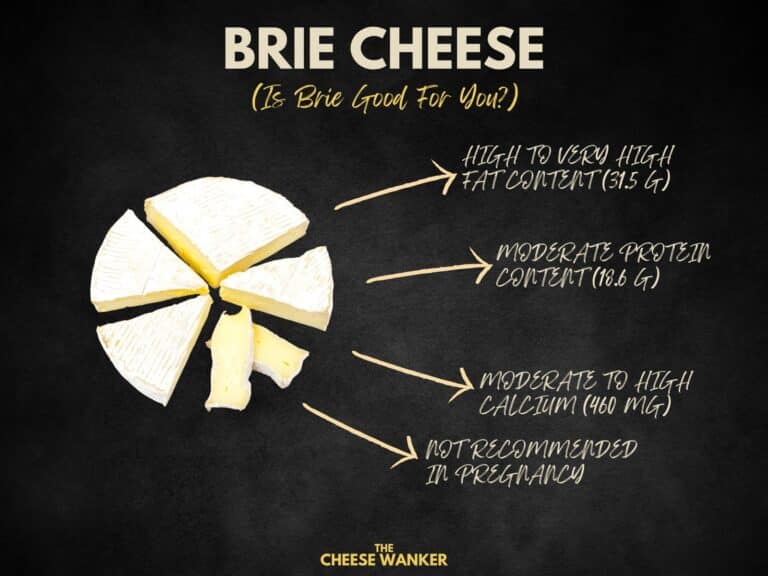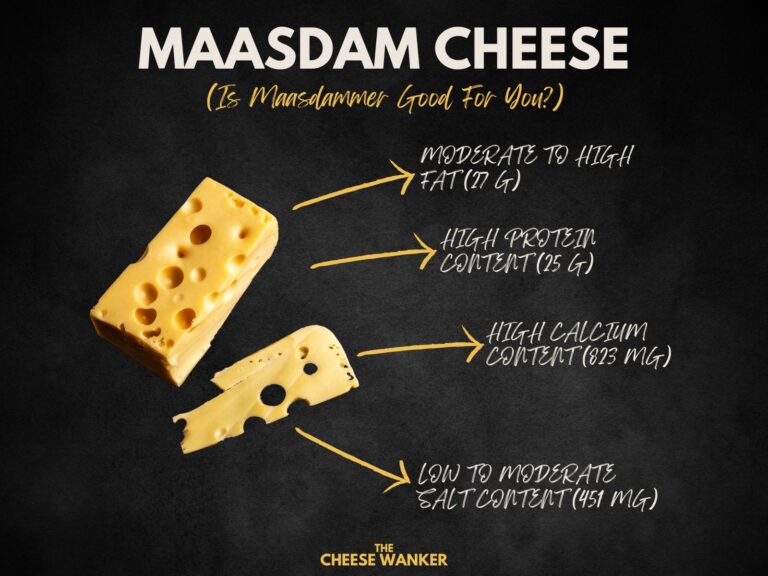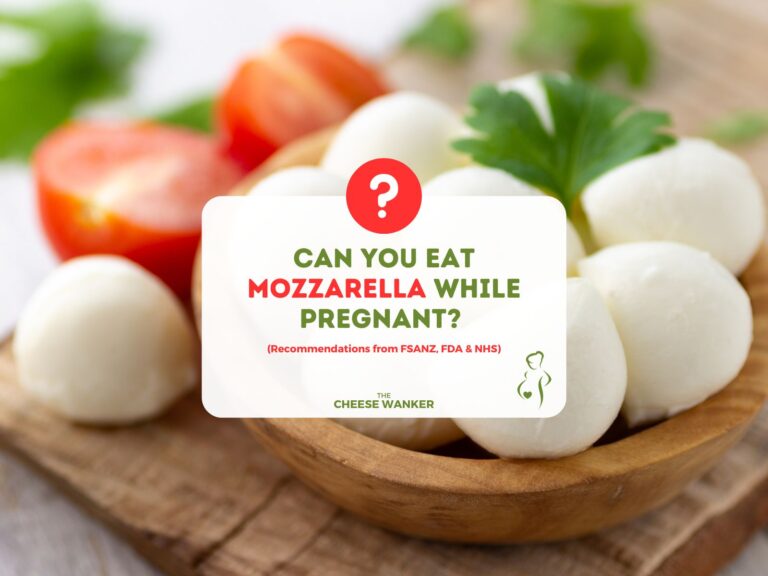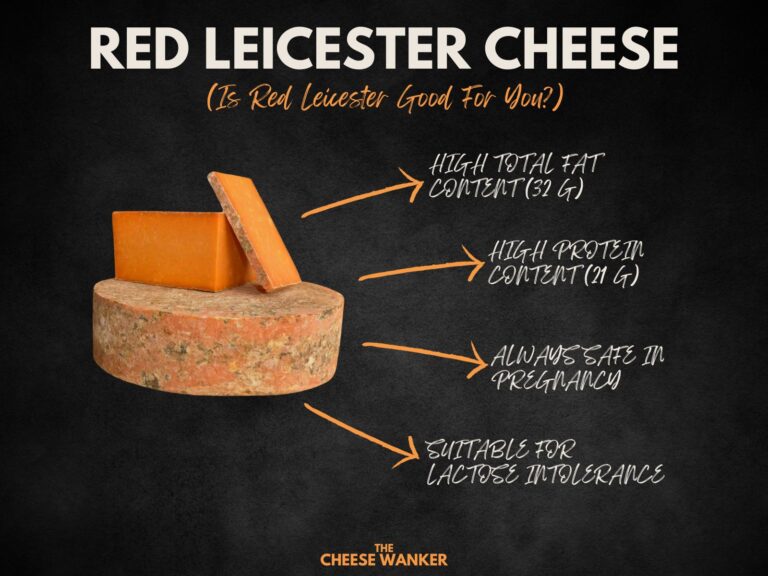Renowned for its meltability, Low Moisture Part Skim Mozzarella has become a staple in a wide range of dishes, from classic pizzas to gourmet salads. But what exactly is Low Moisture Part Skim Mozzarella, and what are its nutritional benefits? In this blog post, we will delve into the nutrition facts of this cheese.
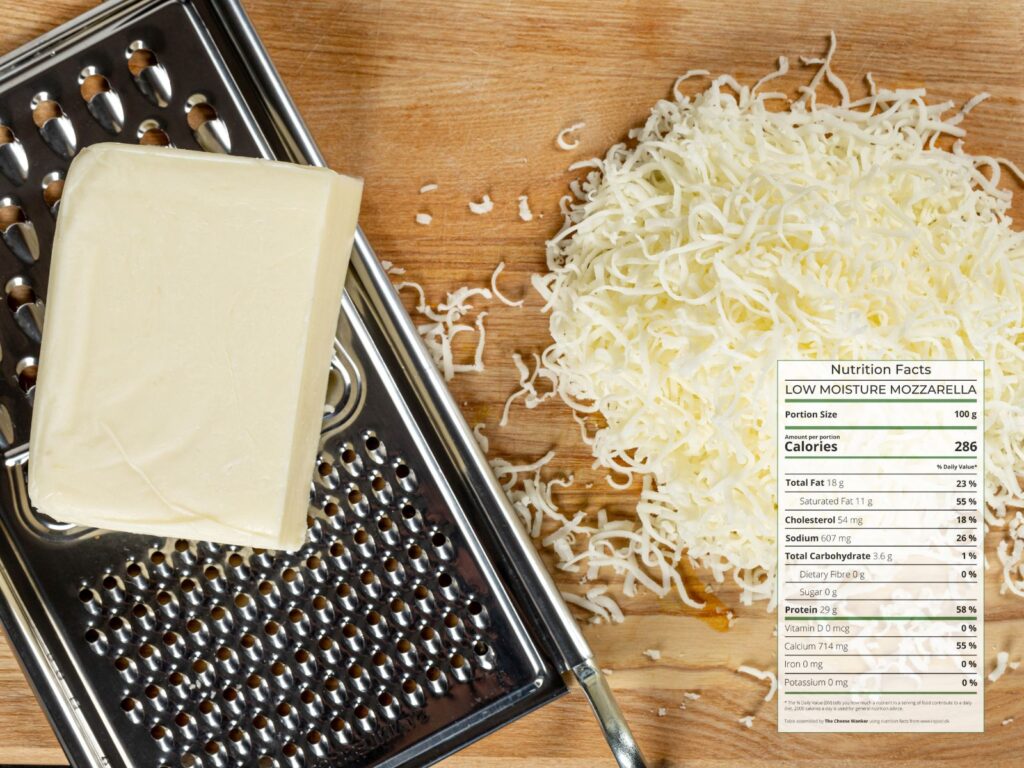
SEE ALSO: Nutrition facts for popular world cheeses in The Cheese Wanker’s index →
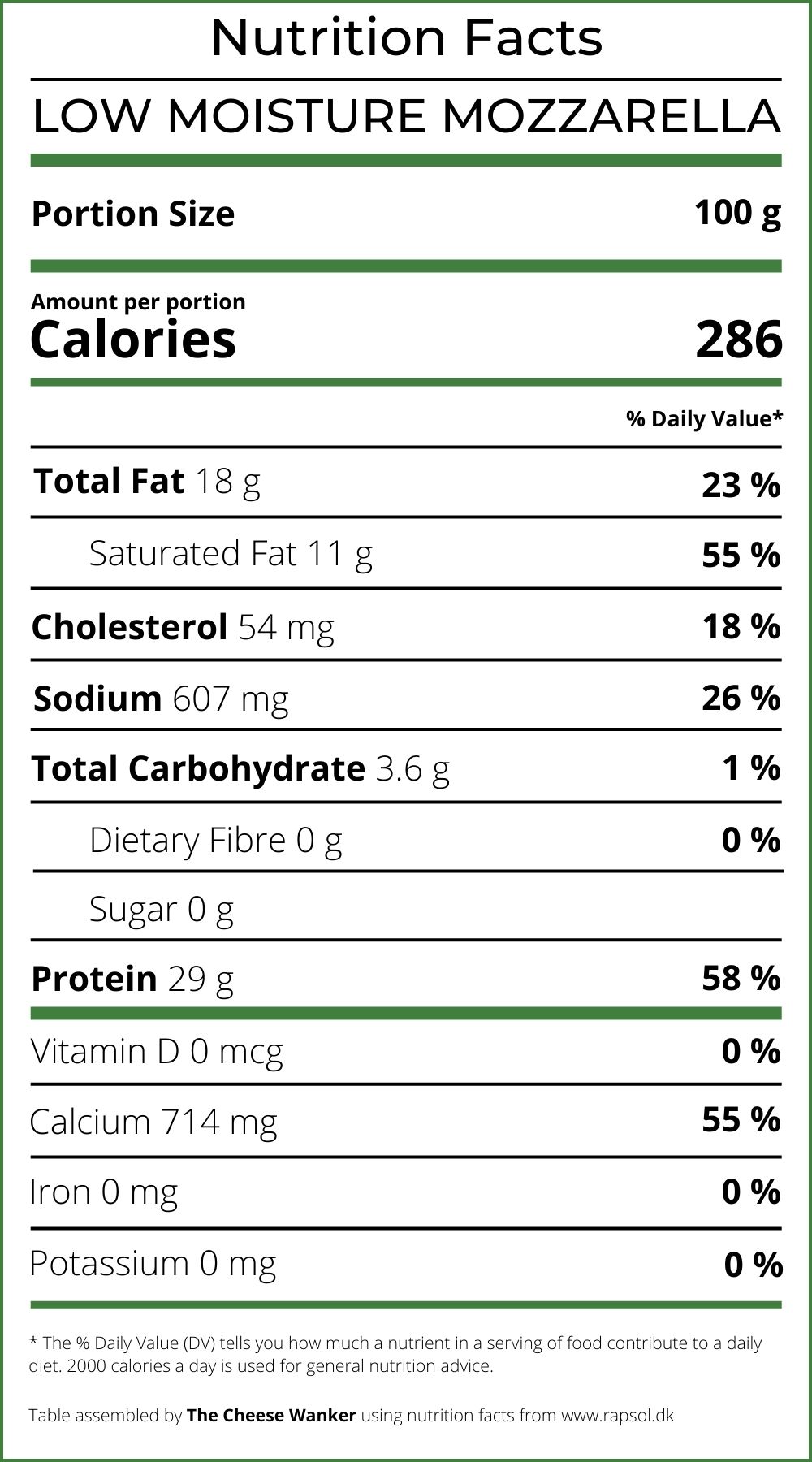
Nutrition facts for Low Moisture Mozzarella
Low Moisture Part Skim Mozzarella is a type of cheese made from cow’s milk. It undergoes a process that removes a significant amount of moisture, resulting in a firmer texture compared to fresh Mozzarella.
Here are some of its key nutrition facts:
Lactose Intolerance
For individuals with lactose intolerance, this type of Mozzarella can be a suitable option. During production, the bulk of the moisture is removed from this cheese. And this is where the lactose lies.
While it still contains some lactose, many people with lactose intolerance find that they can tolerate small to moderate amounts of this cheese without experiencing discomfort. However, it is advisable to listen to your body and adjust your intake accordingly.
Find out everything you’ve ever wanted to know about lactose free cheeses by clicking here.
Fat Content
Unsurprisingly, Low Moisture Part Skim Mozzarella boasts a lower fat content compared to its full-fat counterparts. On average, this cheese contains around 18 g of fat per 100 g serving. In comparison, fresh Buffalo Mozzarella contains about 23 g of fat per 100 g.
This moderate fat content makes it a healthier choice for those aiming to maintain a balanced diet without sacrificing the indulgence of cheese.
However, it is not a great option for cheese lovers following a ketogenic diet. You can learn more about the keto diet and which cheeses are most keto-friendly by clicking here.
Protein Content
Protein is an essential macronutrient that plays a crucial role in various bodily functions, including muscle development and tissue repair. Low Moisture Mozzarella is a notable source of protein, providing approximately 29 g per 100 g serving.
Including this cheese in your meals can contribute to meeting your daily protein needs, especially for individuals following a vegetarian or low-meat diet.
Want to find out which cheeses have the highest protein content? Click here for our blog post covering protein levels in cheese.
Safety in Pregnancy
Pregnant women often wonder about the safety of consuming certain foods, including cheese. The good news is that Low Moisture Mozzarella is generally considered safe to consume during pregnancy.
The cheese is made from pasteurised milk, which helps eliminate potential harmful bacteria. However, you will have to ensure that you store and handle the cheese properly to maintain its freshness and minimise the risk of contamination.
You can read more about which cheeses you can eat when you’re pregnant by clicking here. As always, if unsure, you should consult your doctor.
Salt Content
While Low Moisture Part Skim Mozzarella offers a delectable taste, it is essential to be mindful of its salt content. On average, this cheese contains approximately 600 milligrams of sodium per 100 grams serving.
While this is not excessively high, individuals on a low-sodium diet may need to moderate their intake. Additionally, combining this Mozzarella with other low-sodium ingredients can help balance your overall sodium consumption.
Conclusion
In conclusion, Low Moisture Part Skim Mozzarella is a versatile and nutritious cheese option. Its lower lactose content, moderate fat and protein levels, and safety in pregnancy make it an appealing choice for a wide range of individuals.
Whether you’re a cheese lover looking for a healthier option or someone with dietary restrictions, this cheese can add a delicious touch to your meals without compromising your nutritional goals.
References
Overall nutritional content
The nutritional content of cheese in our table comes from the USDA Food Data Central Repository, the Australian Food Composition Database and cheese manufacturers. We realise that there can be variations between different brands and producers. Hence, the numbers we have used are averages.
Fat content
Our fat RDI data comes from Cleveland Clinic’s Healthy Fat Intake resource.
Type of fat in cheese as per Harvard T.H. Chan’s The Nutrition Source.
Protein content
Our protein RDI data comes from Harvard Medical School’s Harvard Health Publishing.
Cholesterol content
Is There a Correlation between Dietary and Blood Cholesterol? Evidence from Epidemiological Data and Clinical Interventions? – Maria Luz Fernandez and Ana Gabriela Murillo
Saturated fat, carbohydrate, and cardiovascular disease – Patty W Siri-Tarino, Qi Sun, Frank B Hu and Ronald M Krauss
Effect of cheese consumption on blood lipids: a systematic review and meta-analysis of randomized controlled trials – Janette de Goede, Johanna M Geleijnse, Eric L Ding, Sabita S Soedamah-Muthu
Safety in pregnancy
All the advice relating to what cheeses you can eat during pregnancy in this article is based on the recommendations by health authorities in Australia, the UK and the USA. If you are unsure about what you can or cannot eat, please consult your doctor.
Australia – FSANZ, United Kingdom – NHS and United Sates of America – FDA
Lactose content
Lactose residual content in PDO cheeses
Detection of lactose in products with low lactose content
The analysis of lactose in milk and cheese products by HPLC
Food Standards ANZ Food Composition Database
Lactose & Galactose content of cheese
